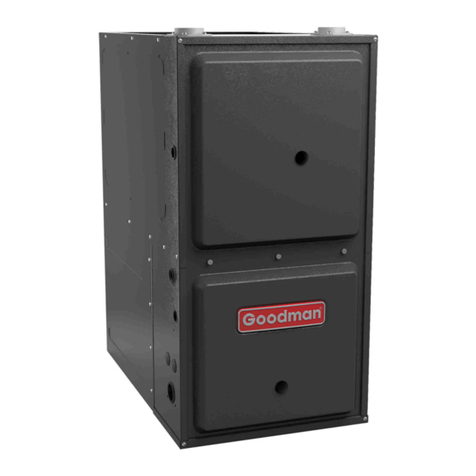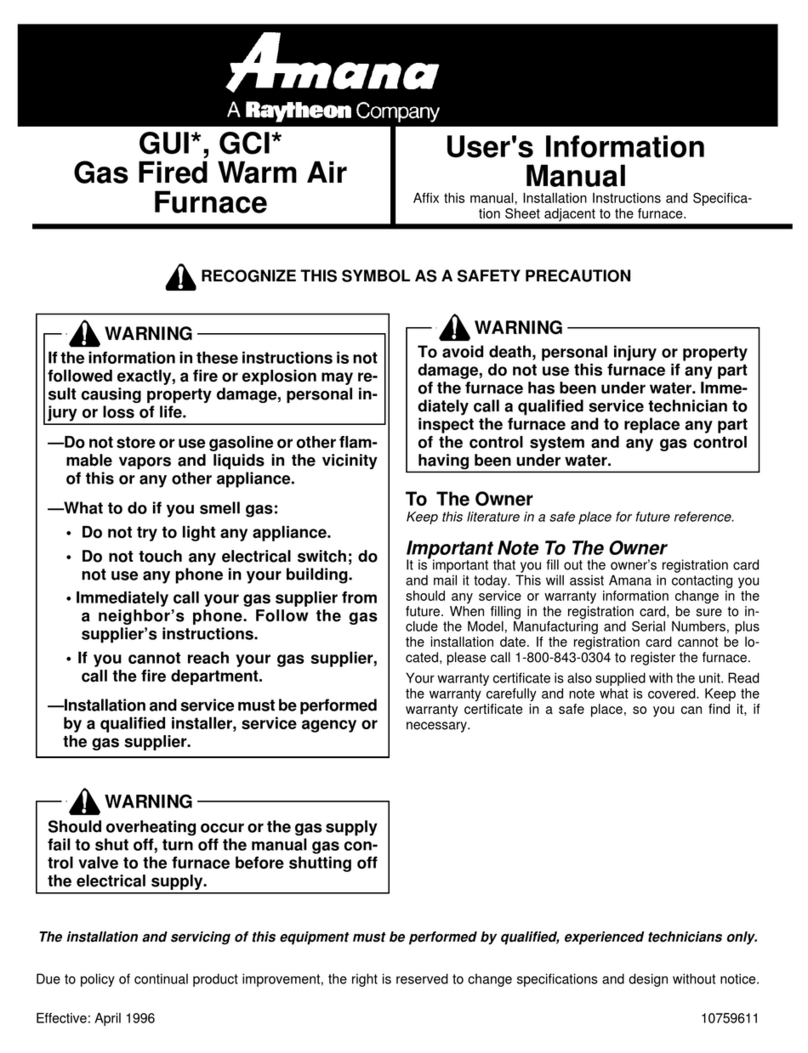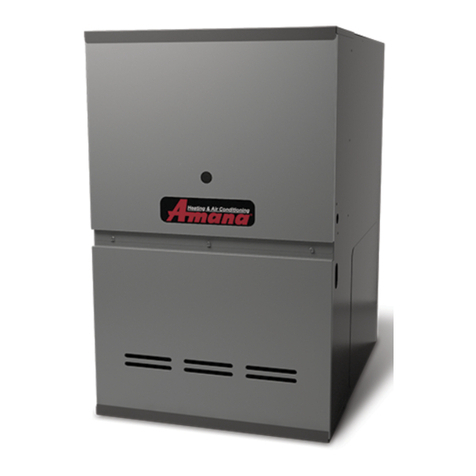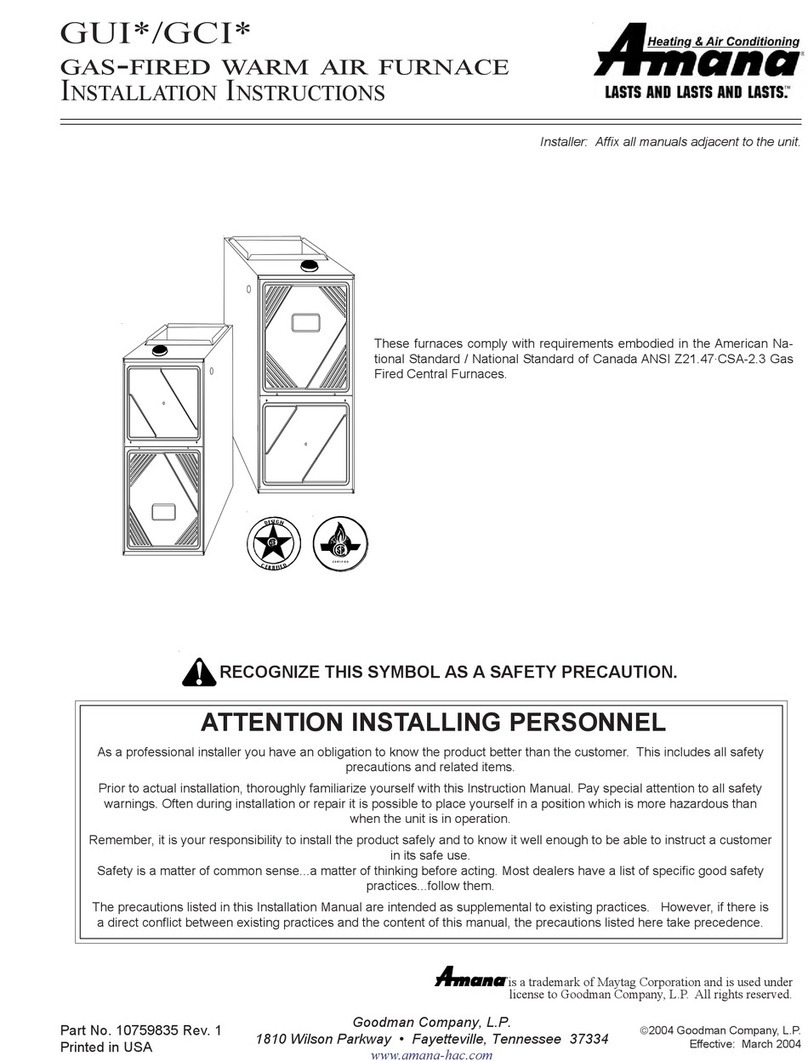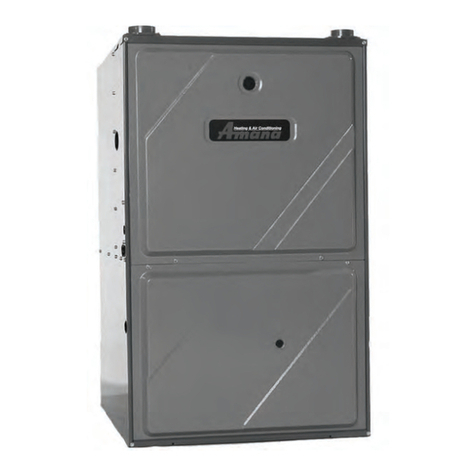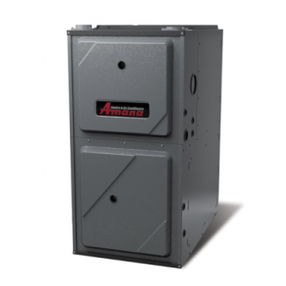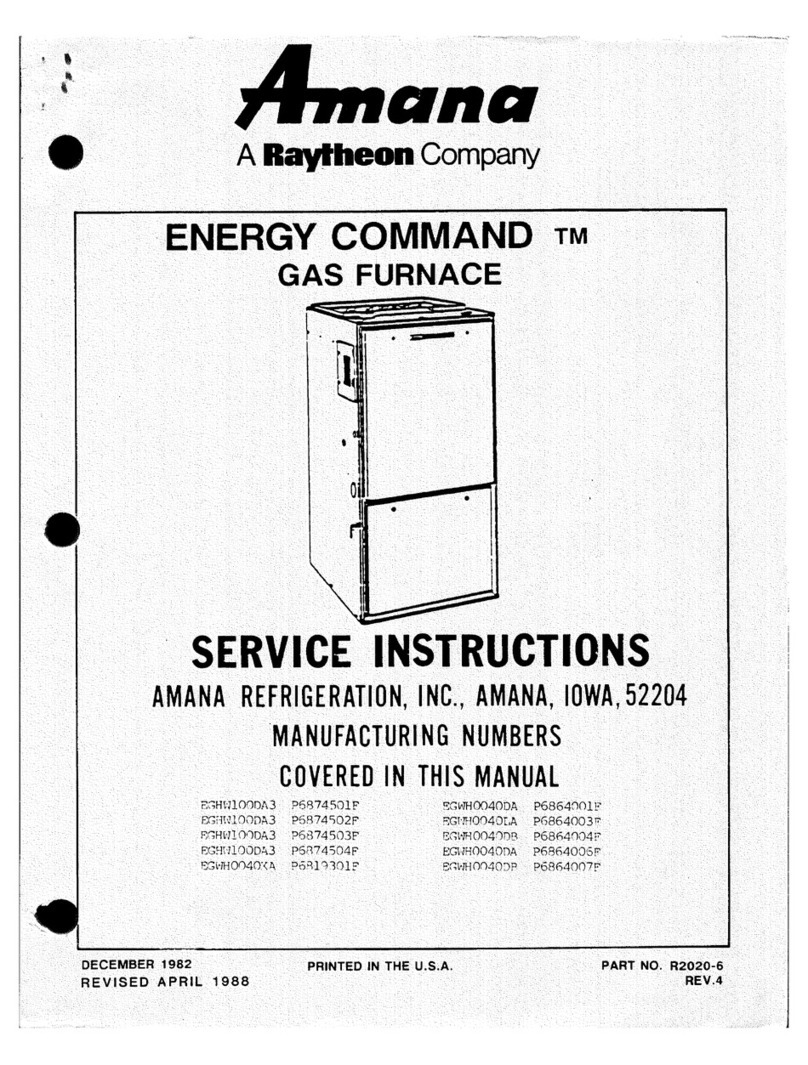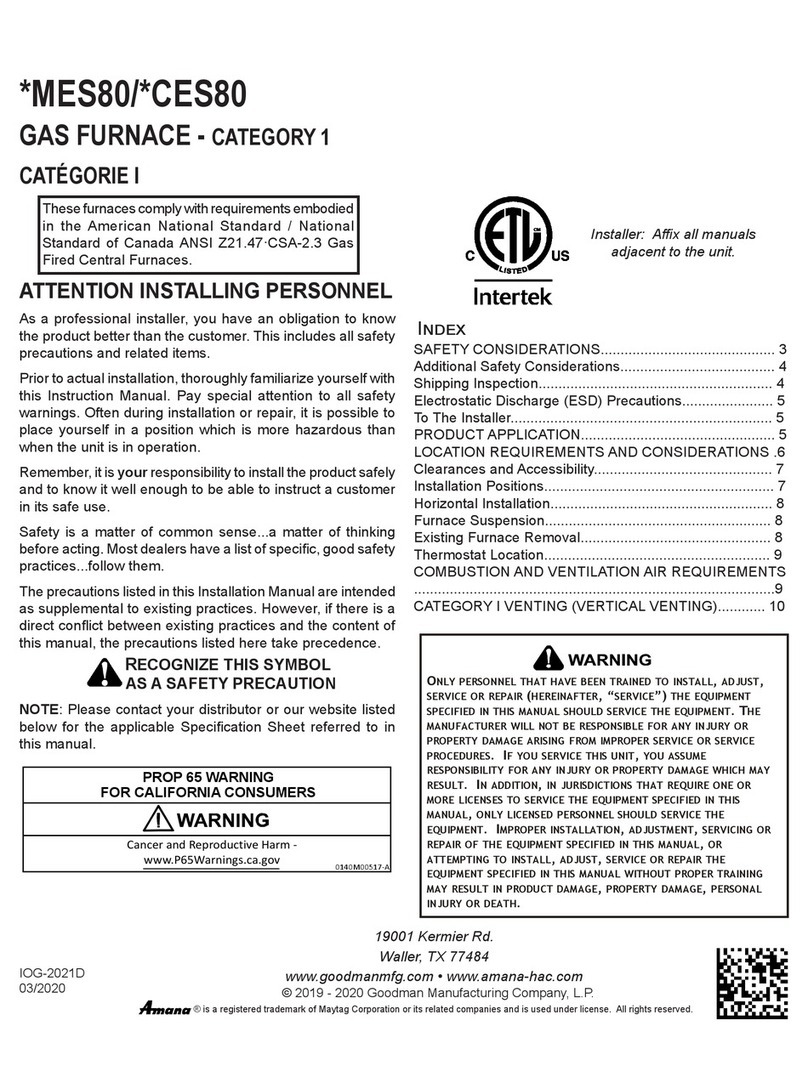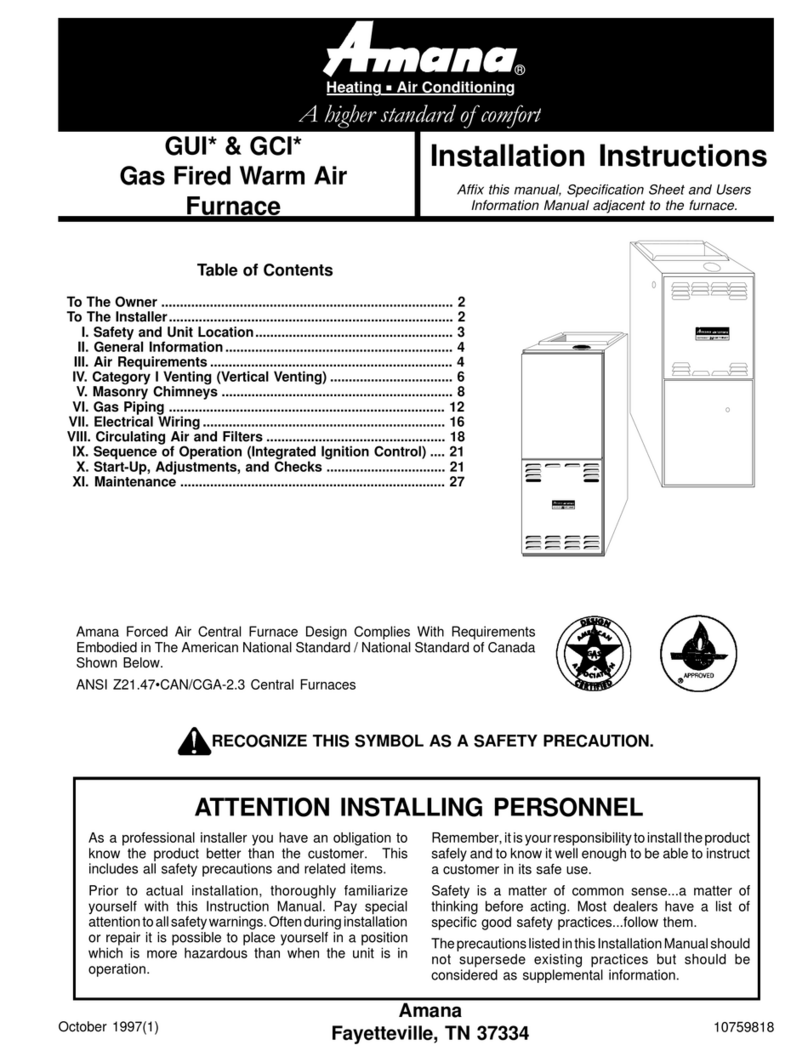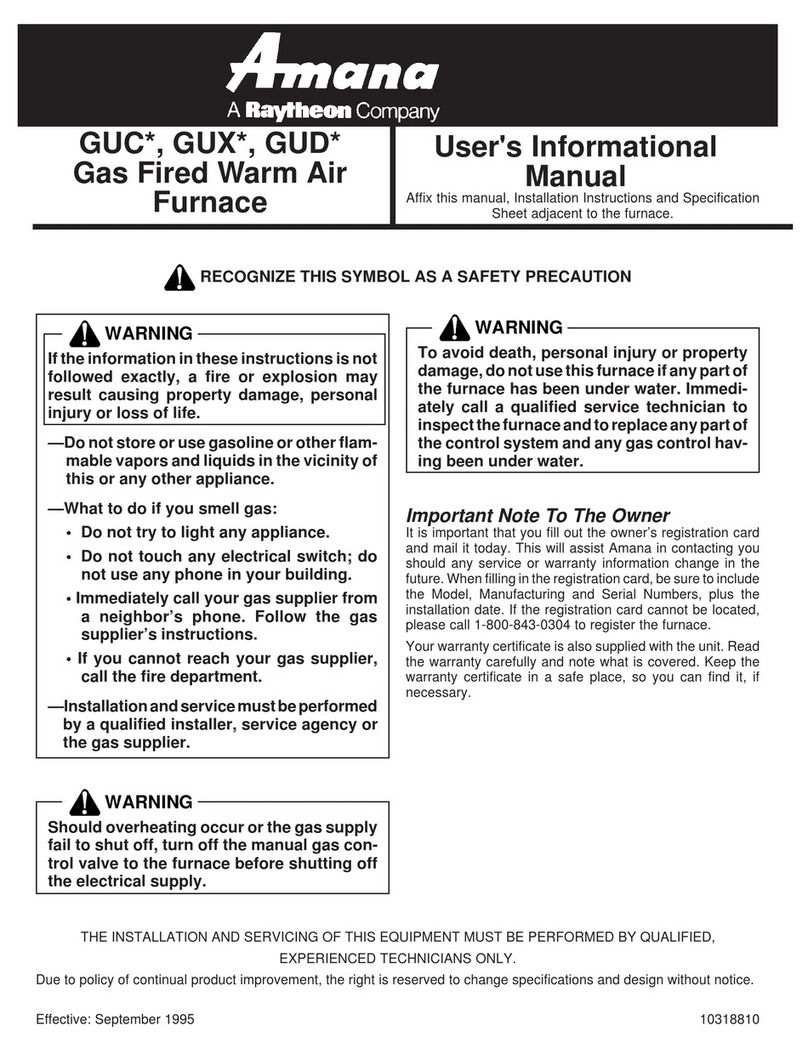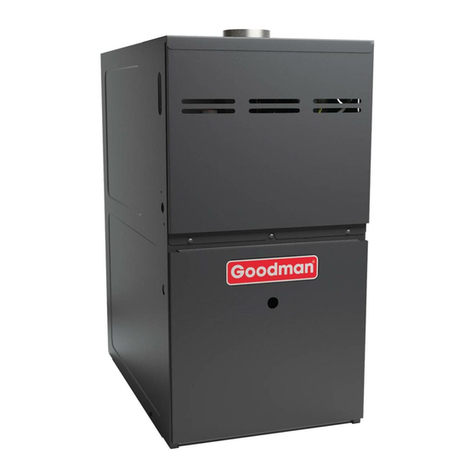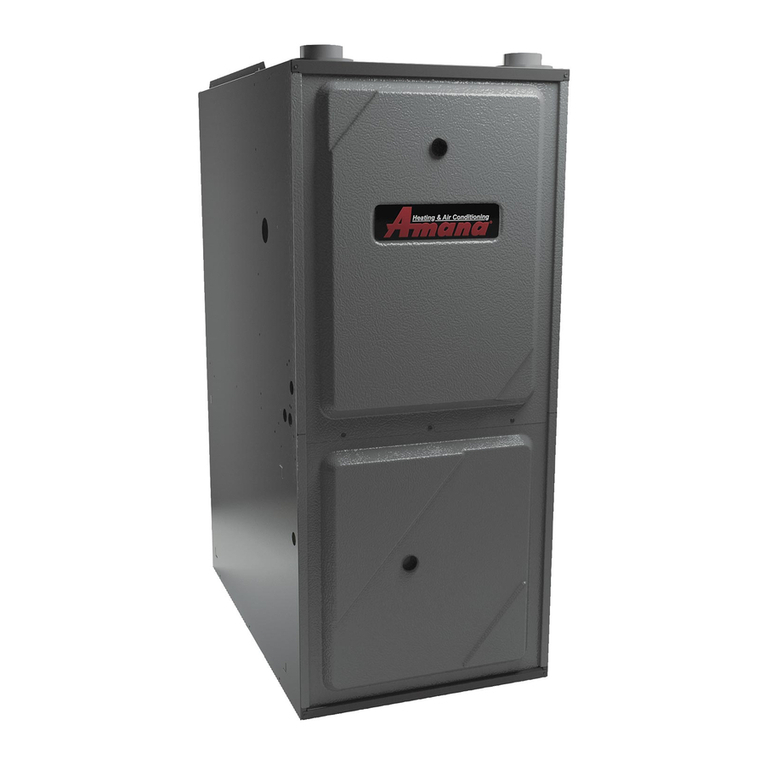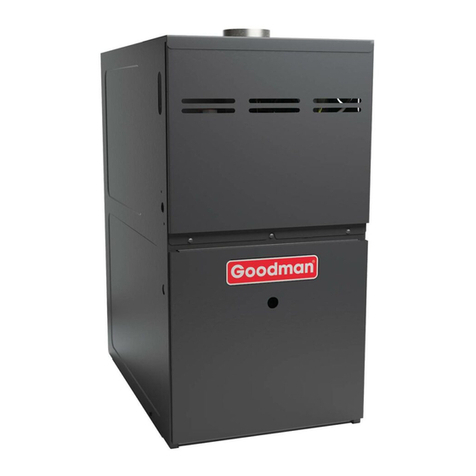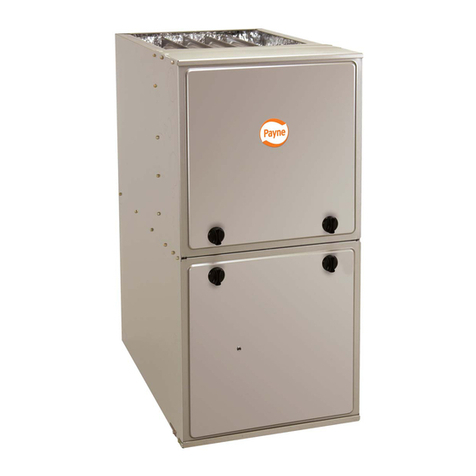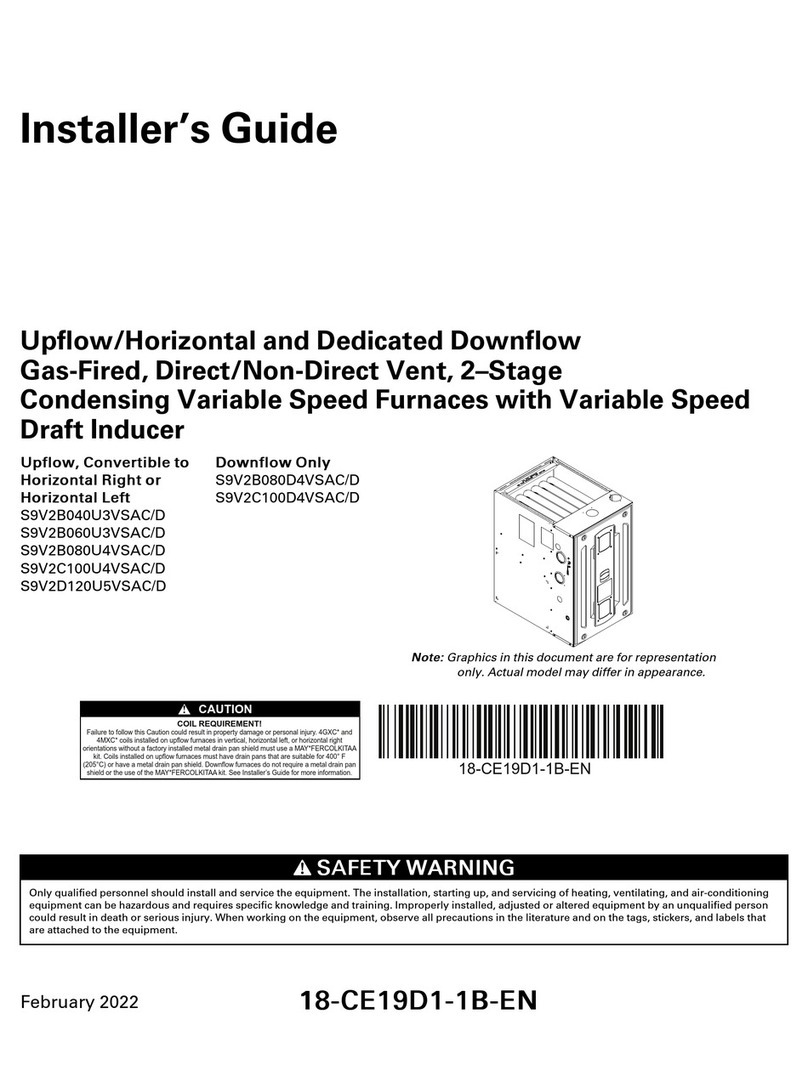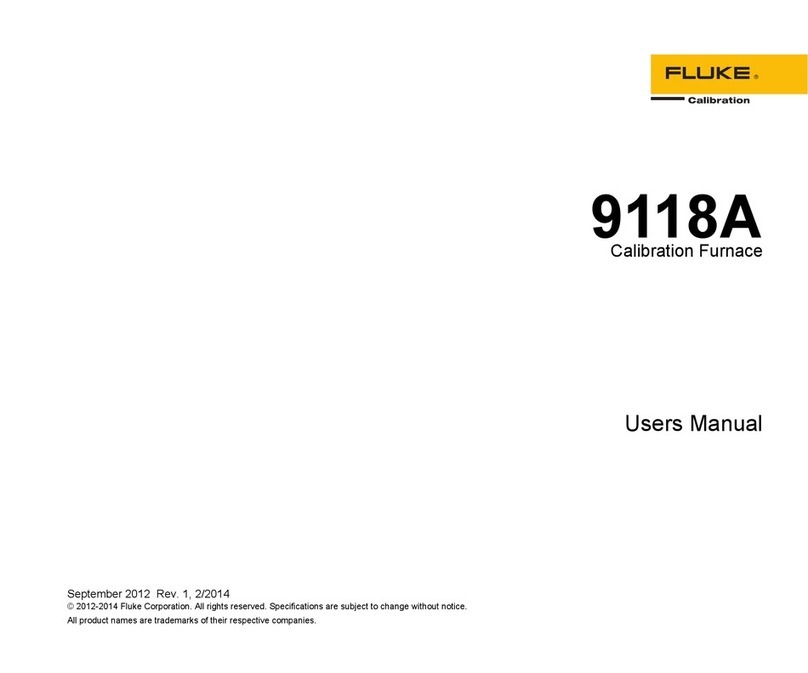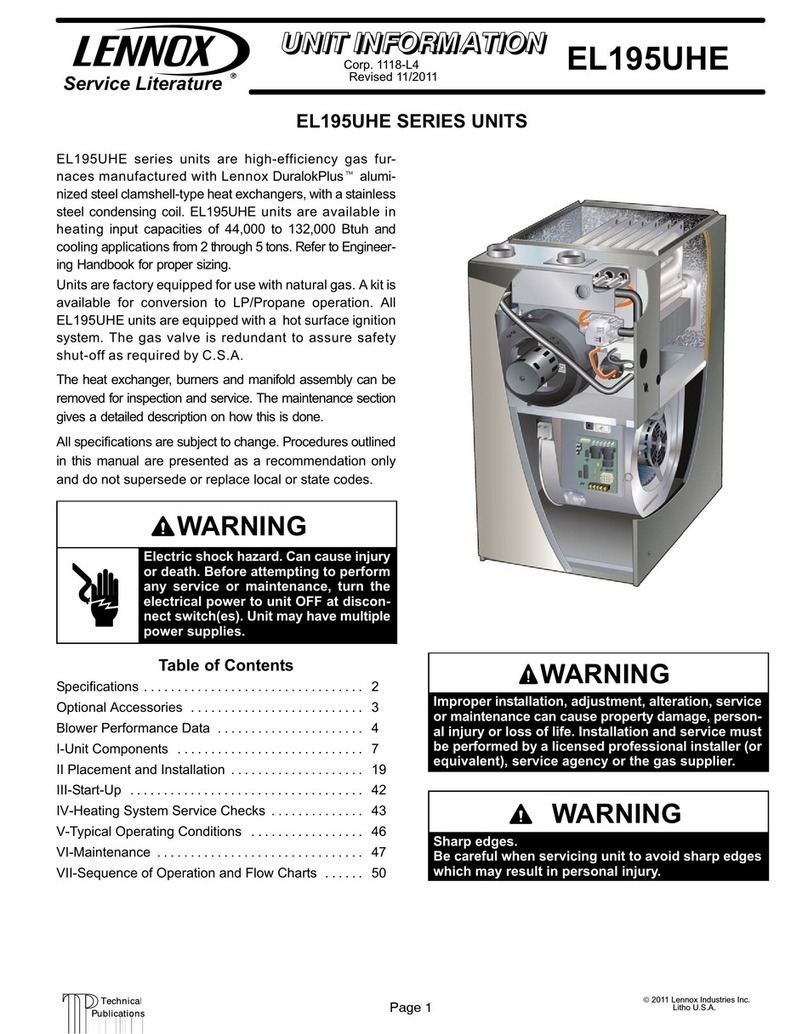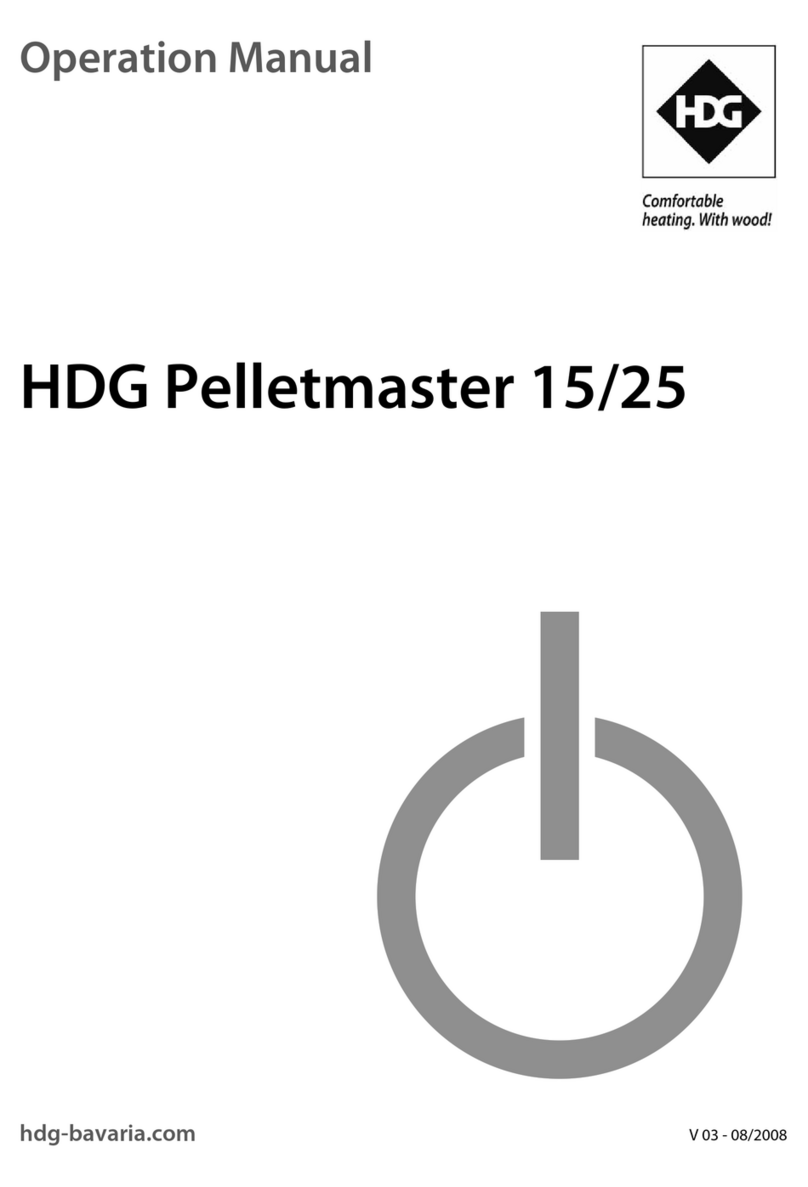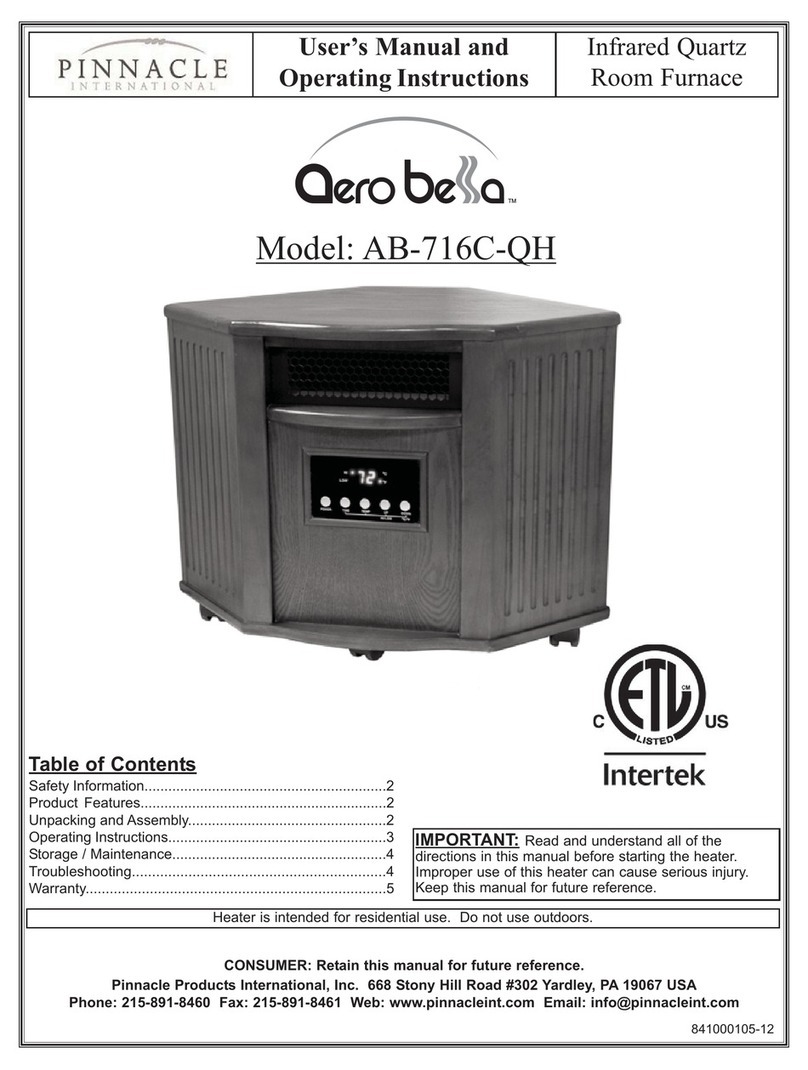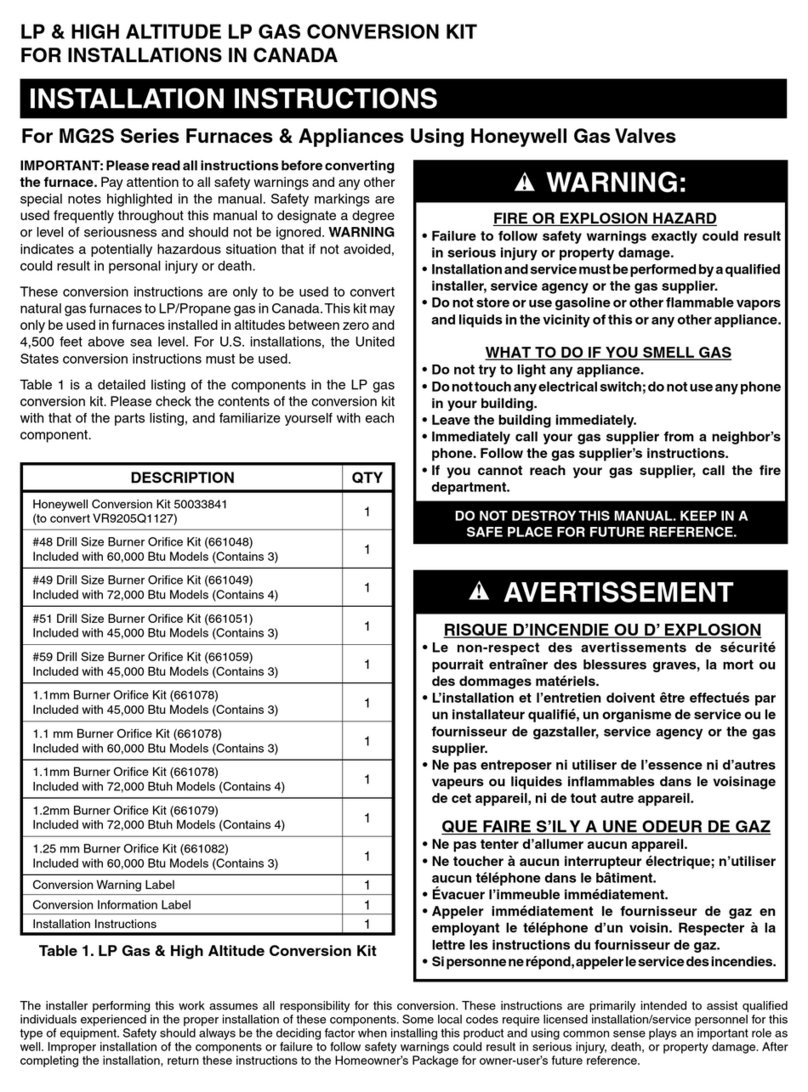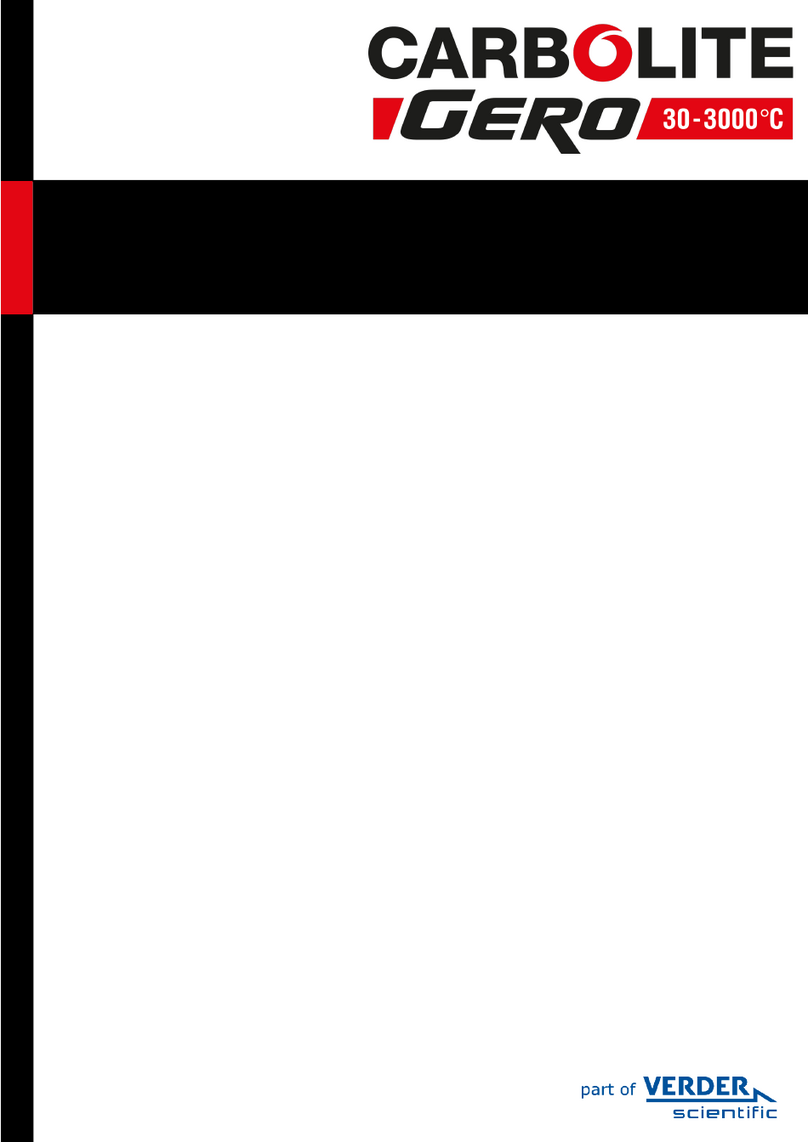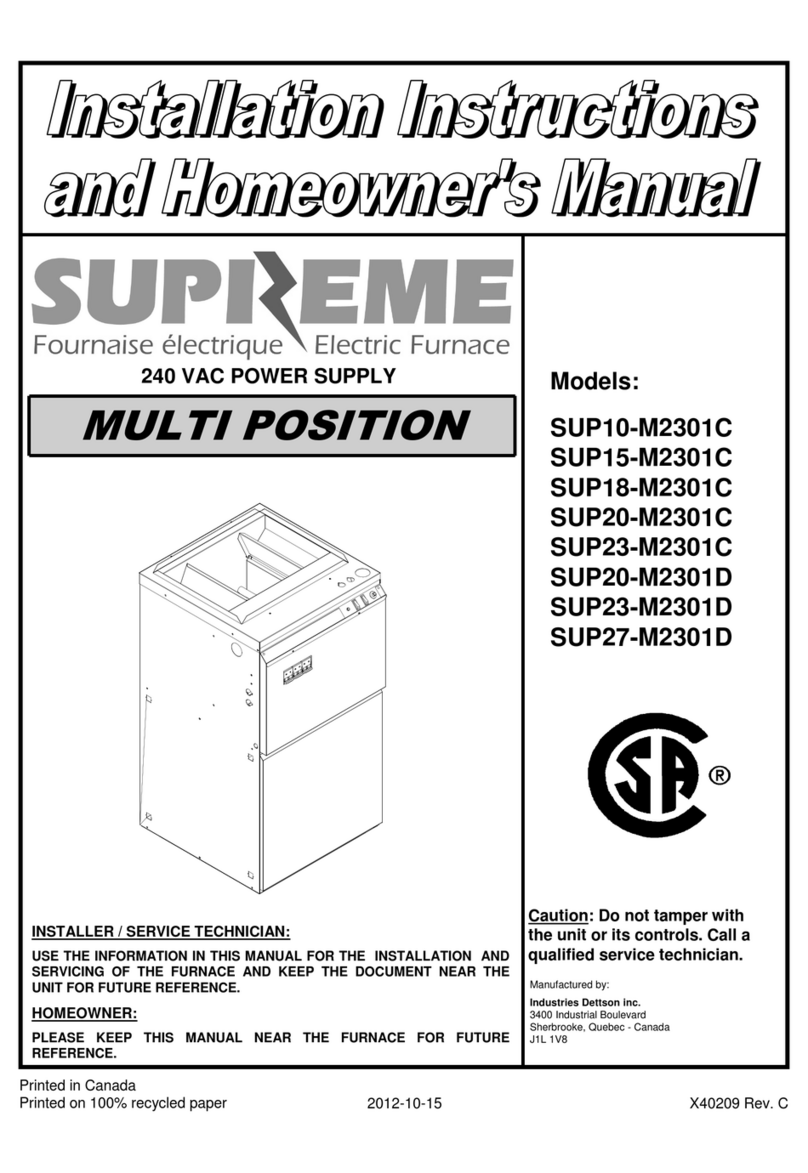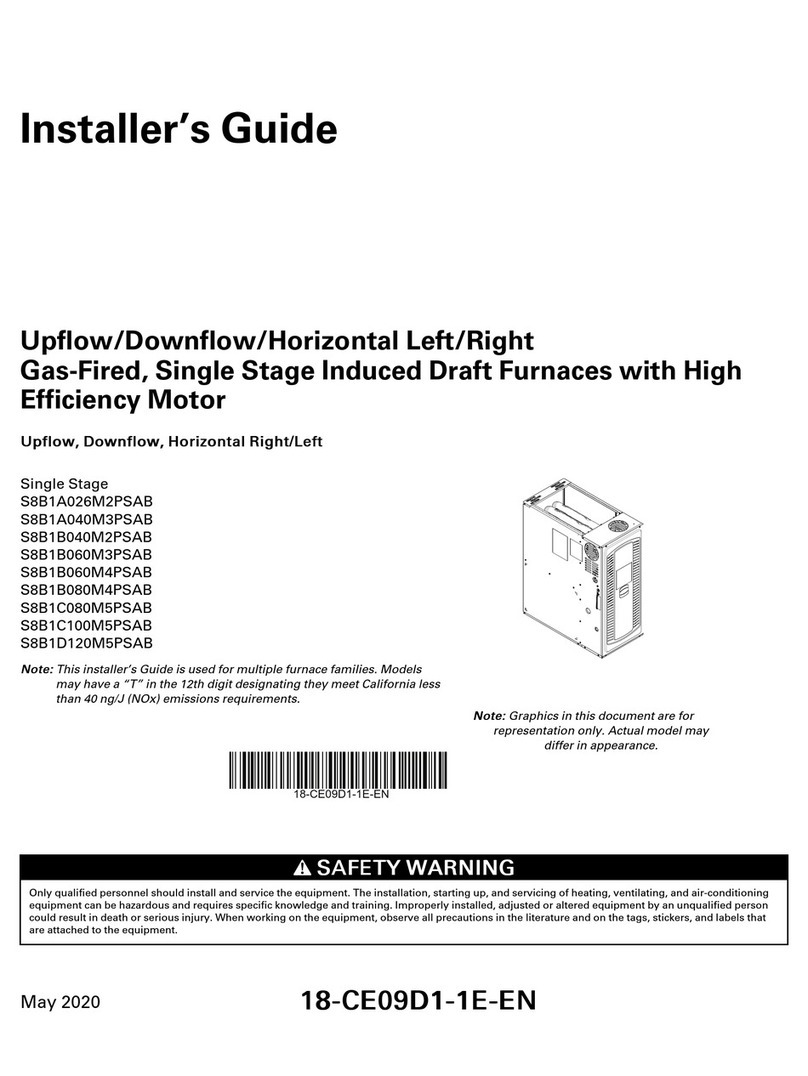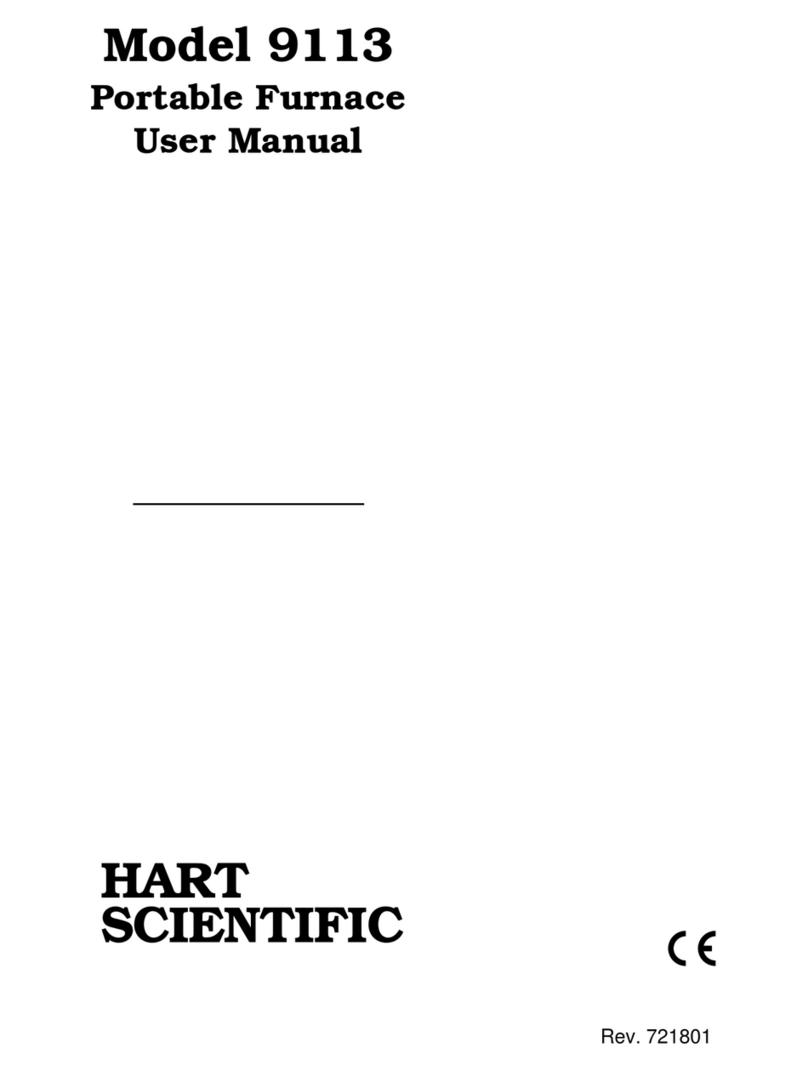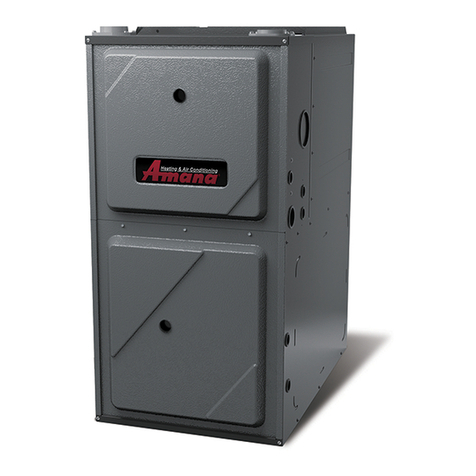
8
A furnace installed in a confined space (i.e., a closet or utility
room)musthavetwoventilationopenings withatotalminimum
free area of 0.25 square inches per 1,000 BTU/hr of furnace
inputrating.RefertoSpecificationSheetapplicabletoyourmodel
for minimum clearances to combustible surfaces. One of the
ventilation openings must be within 12 inches of the top; the
other opening must be within 12 inches of the bottom of the
confinedspace. Inatypicalconstruction,theclearancebetween
the door and door frame is usually adequate to satisfy this ven-
tilationrequirement.
EXISTING FURNACE REMOVAL
NOTE: When an existing furnace is removed from a venting sys-
tem serving other appliances, the venting system may be too
largetoproperlyventtheremainingattachedappliances.
The following vent testing procedure is reproduced from the
AmericanNationalStandard/NationalStandard of Canada for
Gas-FiredCentralFurnacesANSIZ21.47,CSA-2.3latestedition
Section 1.23.1.
The following steps shall be followed with each appliance con-
nectedtotheventingsystemplacedinoperation,whileanyother
appliancesconnectedtotheventingsystemarenotinoperation:
1. Seal any unused openings in the venting system.
2. Inspect the venting system for proper size and hori-
zontalpitch,asrequired by the National Fuel Gas Code,
ANSI Z223.1 or the Natural Gas and Propane Installa-
tion Code, CSA B149.1-15 and these instructions. De-
termine that there is no blockage or restriction, leak-
age,corrosionandother deficiencies which could cause
an unsafe condition.
3. As far as practical, close all building doors and win-
dows and all doors between the space in which the
appliance(s) connected to the venting system are lo-
cated and other spaces of the building.
4. Close fireplace dampers.
5. Turnonclothesdryers and any appliance not connected
to the venting system. Turn on any exhaust fans, such
as range hoods and bathroom exhausts, so they shall
operate at maximum speed. Do not operate a summer
exhaust fan.
6. Follow the lighting instructions. Place the appliance
being inspected in operation.Adjust thermostat so ap-
pliance shall operate continuously.
7. Testfor spillage from drafthood appliances at the draft
hood relief opening after 5 minutes of main burner
operation. Use the flame of a match or candle.
8. If improper venting is observed during any of the above
tests, the venting system must be corrected in accor-
dance with the National Fuel Gas Code ANSI Z223.1/
NFPA54 and/or National Gas and Propane Installation
Code CSA B149.1-15.
9. After it has been determined that each appliance con-
nectedtothe ventingsystemproperlyventswhen tested
as outlined above, return doors, windows, exhaust
fans, fireplace dampers and any other gas burning ap-
pliance to their previous conditions of use.
Ifresizingisrequiredonanyportionoftheventingsystem,use
theappropriatetableinAppendixG in the latest edition of the
National Fuel Gas CodeANSI Z223.1 and/or CSAB149.1-15 In-
stallationCodes.
THERMOSTAT LOCATION
Thethermostatshouldbeplacedapproximatelyfivefeetfrom
theflooronavibration-free,insidewall in an area having good
air circulation. Do not install the thermostat where it may be
influencedbyanyof the following:
• Drafts,or deadspotsbehinddoors,incorners,orunder
cabinets.
• Hot or cold air from registers.
• Radiant heat from the sun.
• Light fixtures or other appliances.
• Radiantheatfromafireplace.
• Concealedhotorcoldwaterpipes,orchimneys.
• Unconditioned areas behind the thermostat, such as
anoutsidewall.
Consulttheinstructions packaged withthethermostatfor
mountinginstructionsandfurtherprecautions.
C
OMBUSTION
& V
ENTILATION
A
IR
R
EQUIREMENTS
T
O
AVOID
PROPERTY
DAMAGE
,
PERSONAL
INJURY
OR
DEATH
,
SUFFICIENT
FRESH
AIR
FOR
PROPER
COMBUSTION
AND
VENTILATION
OF
FLUE
GASES
MUST
BE
SUPPLIED
. M
OST
HOMES
REQUIRE
OUTSIDE
AIR
BE
SUPPLIED
INTO
THE
FURNACE
AREA
.
WARNING
Improved construction and additional insulation in buildings
have reduced heat loss by reducing air infiltration and es-
cape around doors and windows. These changes have helped
in reducing heating/cooling costs but have created a prob-
lem supplying combustion and ventilation air for gas fired
and other fuel burning appliances. Appliances that pull air
out of the house (clothes dryers, exhaust fans, fireplaces,
etc.) increase the problem by starving appliances for air.
House depressurization can cause back drafting or improper
combustionofgas-firedappliances,therebyexposing building
occupants to gas combustion products that could include car-
bonmonoxide.
If this furnace is to be installed in the same space with other
gas appliances, such as a water heater, ensure there is an ad-
equate supply of combustion and ventilation air for the other
appliances. Refertothelatestedition of the NationalFuelGas
Code NFPA54/ANSI Z223.1 or CAN/CSAB149.1-15 Installation
Codes or applicable provisions of the local building codes for
determiningthecombustionairrequirementsfortheappliances.

